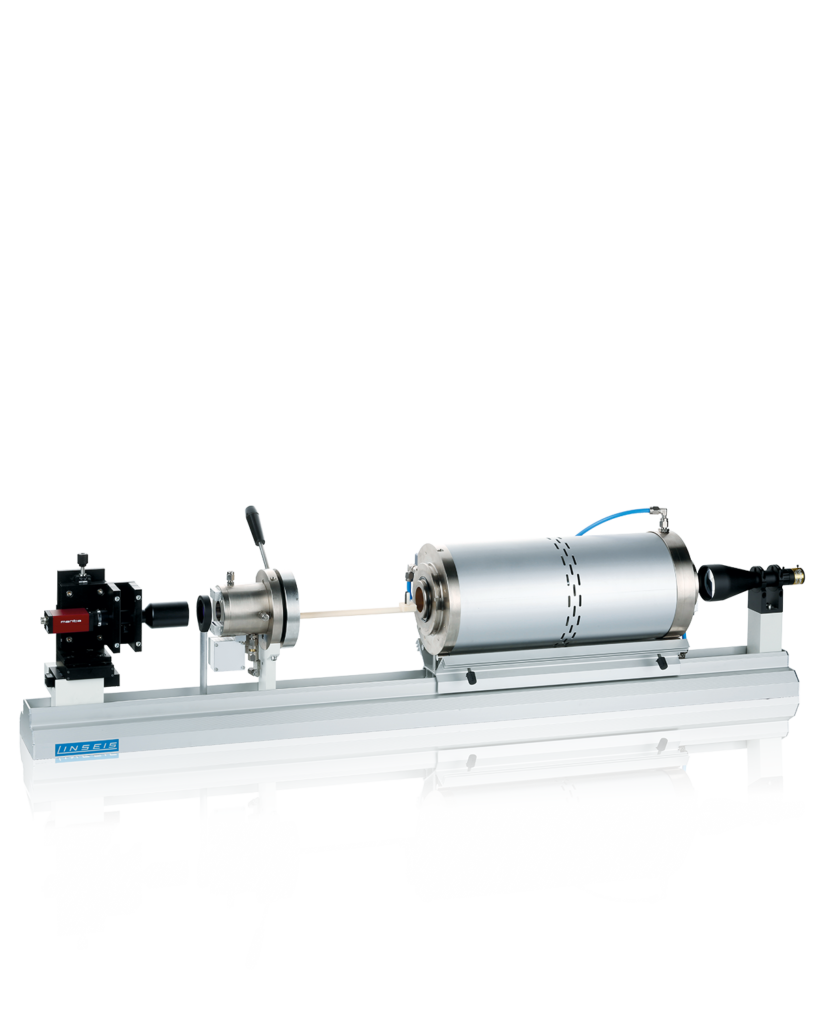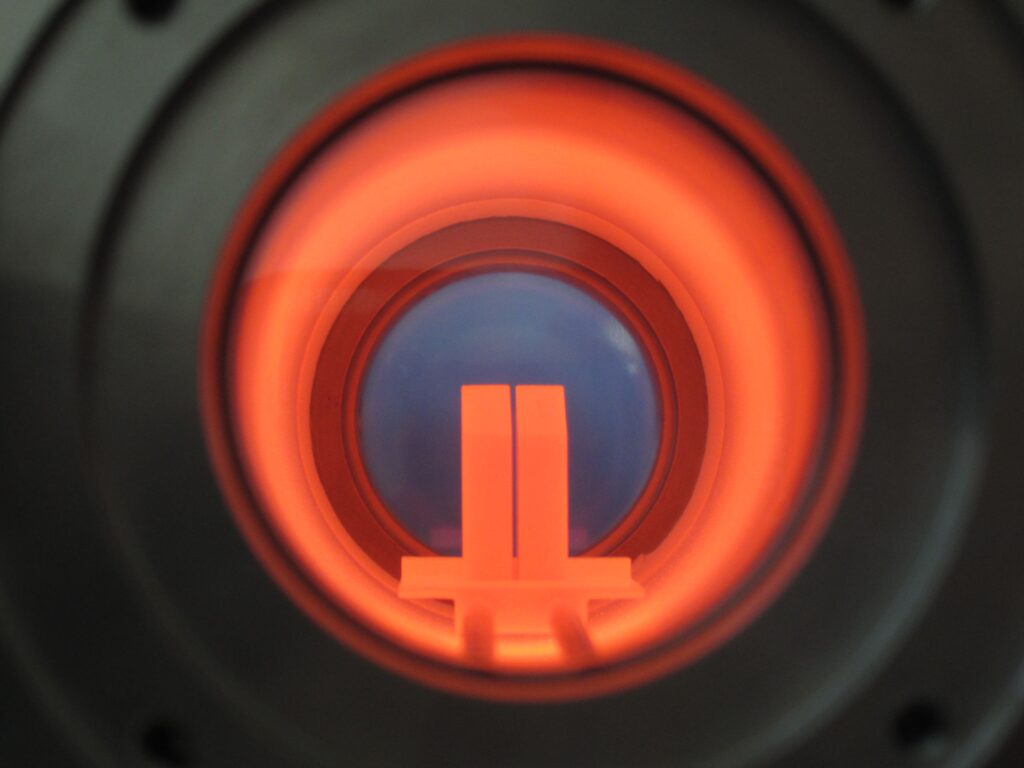Description
To the point
The Linseis DIL L74 HM heating microscope is a laboratory measuring device for the thermo-optical examination of materials.
Its wide temperature range (-100 to 2000°C) and vacuum-tight sample chamber open up completely new fields of application.
With a high-resolution color camera, resolutions of up to 1 micrometer can be achieved on a sample area of up to 10 x 14 mm2.
This provides an impression of various thermo-optical changes in real time.
From the sintering behavior of special ceramics to surface effects on solids and liquids, wetting properties and contact angle measurements between solids and liquids or melts, almost any application can be realized.
The heating microscope has a furnace that can be evacuated up to 10-5 mbar by turbomolecular pump.
Inert, reducing and oxidizing atmospheres are therefore easily possible over the complete temperature range.
In addition to the evaluation of videos and photos, the supplied software also allows automatic determination of wetting and contact angles as well as event-controlled furnace activation.
The software also automatically determines the characteristic temperature points during heating (sphere point, half sphere point, etc.) in accordance with DIN 51730, ISO 540 or CEN/TS 15404.
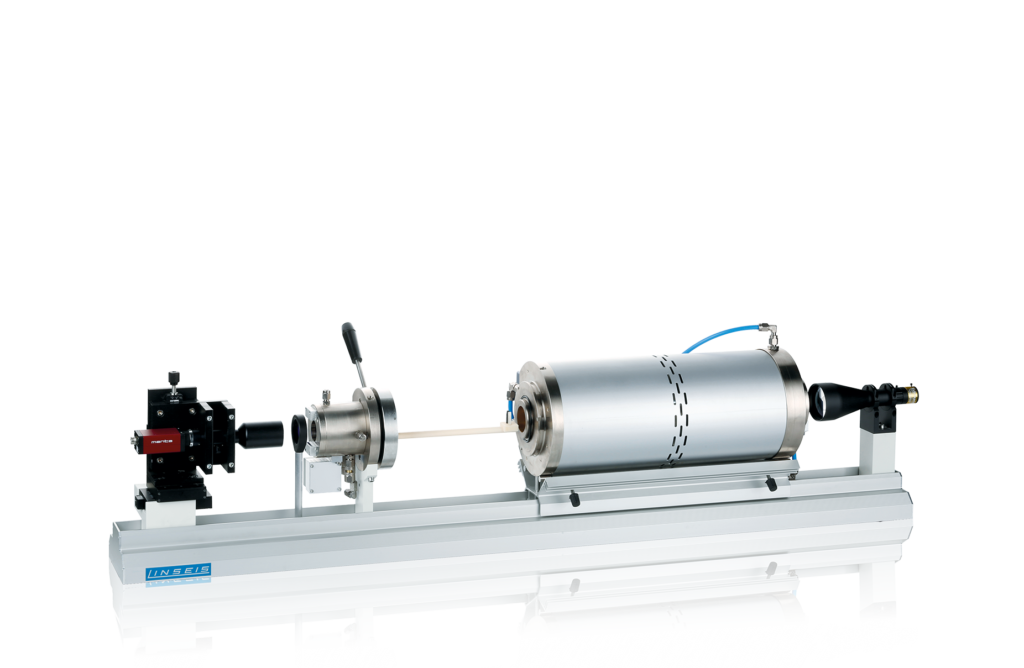
The advantages of the Linseis heating microscope at a glance:
- Non-contact sample measurement
- Almost all atmospheres possible
- Temperature ranges from -100°C to 2000°C possible
- CTE of solids and volumetric change of melts
- Automatic evaluation of the relevant temperature points
- Video and image recording in real time
- Optical optimization packages for CTE and optical microscope (available separately or combined)
Unique features

Non-contact sample measurement
Wide temperature range
and flexible atmospheres
Polarized light source for high resolution imaging
High resolution camera system for CTE measurement and volumetric changes
Questions? We're just a call away!
+1 (609) 223 2070
+49 (0) 9287/880 0
Our service is available Monday to
Thursday from 8 am to 4 pm
and Friday from 8 am to 12 pm.
We are here for you!
Specifications
MODEL | DIL L74 HM* |
|---|---|
| Optical measuring system: | Heating microscope equipped with a high-resolution camera and fully automated focus |
| Temperature range: | -100°C up to 500°C RT up to 500/1000/1500/2000°C |
| Measuring system: | optical non contact |
| Accuracy: | up to 1 µm |
| Field of view: | 10 x 14 mm |
| Atmosphere: | inert, reducing, oxid., vacuum (option) |
| Vacuum: | up to 10E-5 mbar |
| Heating rate: | 0.01 to 100 K/min. (depends on furnace) |
| Int. Standards: | ASTM D1857, CEN/TR 15404,BS 1016:Part 15, CEN/TS 15370-1, DIN 51730, IS 12891, ISO 540, NF M03-048 |
| Morphometrics: | Height, Width, Contact angle, Height/Width Ratio, Area, Roundness, More and freely user-selectable also possible |
| Interface: | USB |
| *Specifications depend on the configurations |
Areas of application
- Measurements according to DIN 51730 (1984, 1998) / ISO 540-1995
- Characteristic temperature determination (sphere point etc.)
- Ash fusion microscopy
- Observation and analysis of sintering processes
- Contact angle determination
- Microscopy at high temperatures and under different atmospheres
- Dilatometric curves (e.g. shape, area)
- Softening and melting behavior, wetting behavior
- Viscosity curve
Suitable for the analysis of coal ash, bio-ash, slag, as well as ceramics, enamel, clay ceramics, dental ceramics, grinding wheels, special ceramics, refractory ceramics, glass, steel, soldering pastes, stainless steel and fluxes.
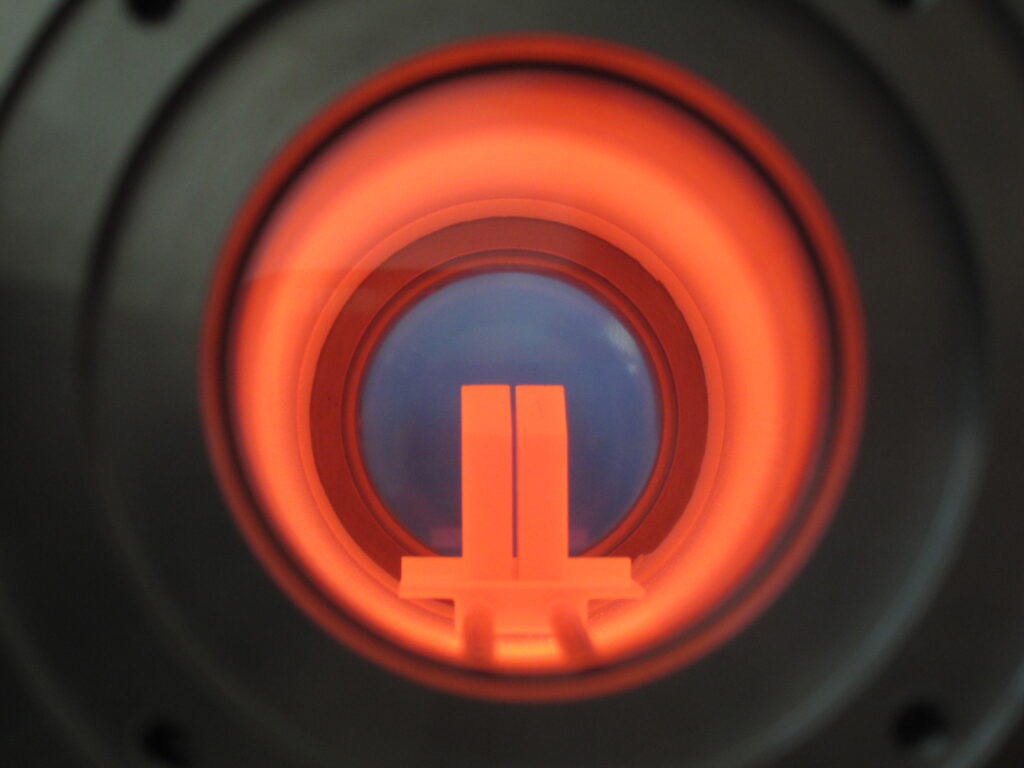
Software
Making values visible and comparable
The powerful LINSEIS thermal analysis software, which is based on Microsoft® Windows®, performs the most important function in the preparation, execution and evaluation of thermoanalytical experiments, in addition to the hardware used. With this software package, Linseis offers a comprehensive solution for programming all device-specific settings and control functions, as well as for data storage and evaluation. The package was developed by our in-house software specialists and application experts and has been tried and tested over many years.

Dilatometer functions
- Glass transition and softening point determination
- Automatic softening point switch-off, freely adjustable (system protection)
- Display of absolute or relative shrinkage or expansion
- Representation and calculation of technical / physical expansion coefficients
- Rate-controlled sintering (software option)
Sintering process evaluation - Density determination
- Automatic evaluation routines
- System correction (temperature, zero curve, etc.)
General functions
- Real-time color display
- Automatic and manual scaling
- Display of the axes freely selectable (e.g. temperature
e.g. temperature (x-axis) against delta L (y-axis) - Mathematical calculations (e.g. first and second derivatives)
- Saving complete evaluations
- Multitasking function
- Multi-user function
- Zoom option for various curve sections
- Any number of curves can be loaded on top of each other for comparison
- Online Help Menu
- Free labeling
- EXCEL® and ASCII export of measurement data
- Data smoothing
- Zero curves are offset
- Cursor function
- Statistical curve evaluation (mean value curve with confidence interval)
- Tabular printout of the data and expansion coefficients
- Calculation of Alpha Phys, Alpha Tech, relative expansion L/L0
- Curve arithmetic, addition, subtraction, multiplication
Measuring system
Ash melting microscope
1 – softening temperature = edges become round, 2 – spherical temperature = round shape with a height as large as its base line, 3 – half spherical temperature = half spherical shape with a height half as large as its base line, 4 – flow temperature = sample is almost liquid, has only a third of the size of half the spherical point.
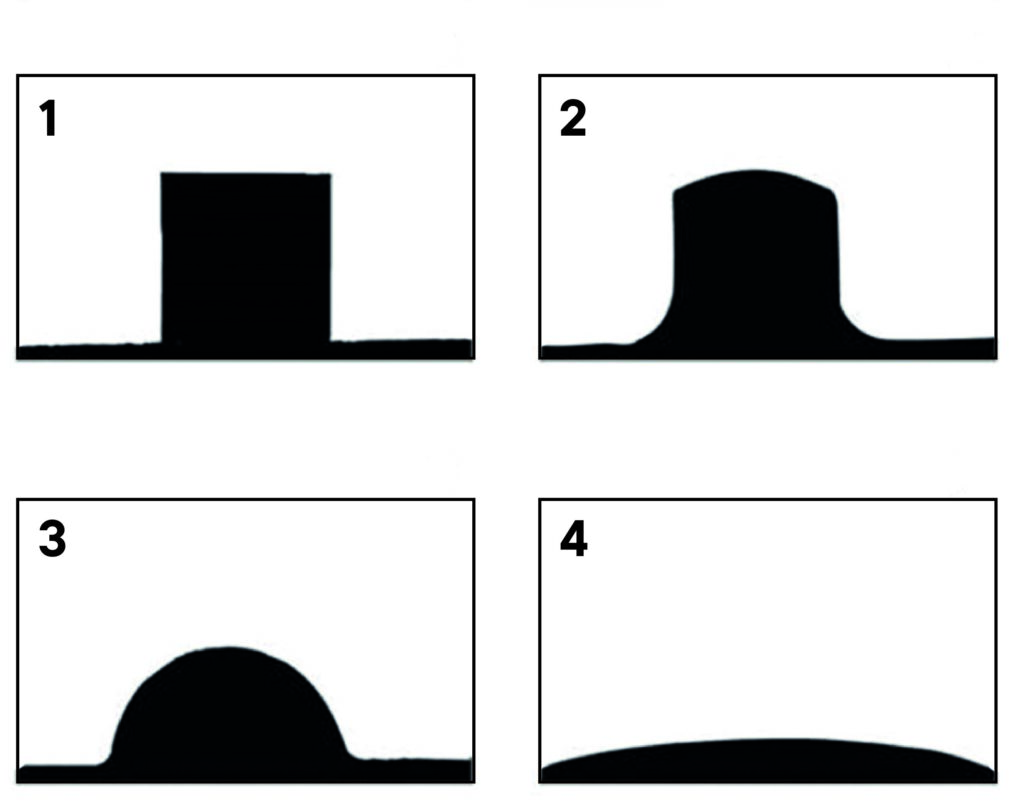
Contact angle
The contact angle is measured as part of the drop contour analysis, in which the shadow image of the drop is optically evaluated.
In addition, the temperature dependence of the contact angle can be precisely determined using the Linseis heating microscope.
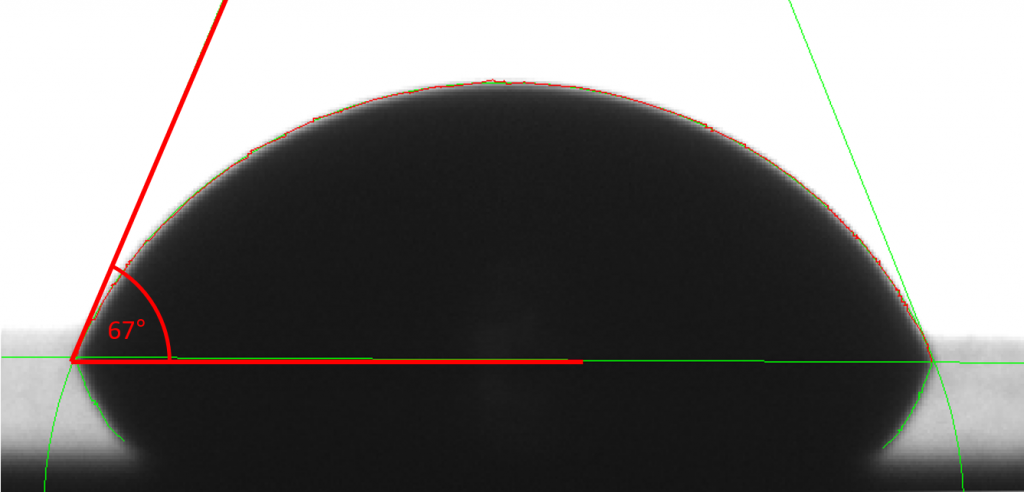
Damage analysis of a coated quartz pane
